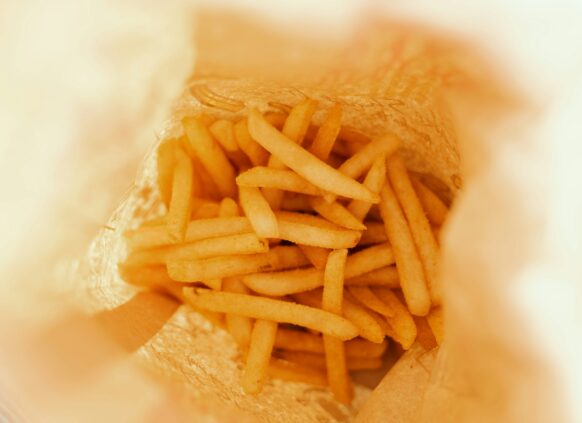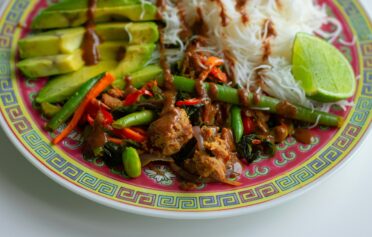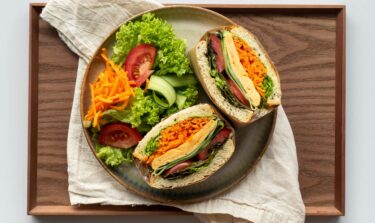
The worst foods for cholesterol – and the ones that aren’t as bad as you think
High cholesterol can raise your risk of heart disease and stroke. What you eat plays a big role in managing your cholesterol, but it’s not just about cutting out foods that contain cholesterol. The biggest impact comes from foods high in saturated fats and trans fats.
Making small changes – like eating more whole foods, such as vegetables, pulses, and whole grains – can support your cholesterol levels and overall health.
If you’re living with high cholesterol and have a BMI over 35, you could be eligible for personalised support from Oviva to help you feel more in control of your health.
Key Takeaways:
- Eating too much saturated and trans fats can raise blood cholesterol levels by affecting how your liver processes fat.
- Cutting back on processed meats and fast food can help lower cholesterol.
- Limiting foods that increase cholesterol may support weight loss, which in turn can improve your cholesterol.
- Oviva offers tailored support to help you build a way of eating that fits your life and supports your health.
What is dietary cholesterol vs. blood cholesterol?
It’s important to understand the difference between dietary cholesterol and blood cholesterol, as they have different effects on your health.
Dietary cholesterol
Dietary cholesterol is the cholesterol found in animal-based foods like meat and eggs. For most people, it has a small impact on blood cholesterol levels.
If you have familial hypercholesterolaemia (high cholesterol passed down genetically), you may be an exception and may need to limit or avoid very high cholesterol foods (like liver and other offal).
Research shows some people are ‘hyper responders’, meaning eating dietary cholesterol can raise their blood cholesterol levels more than average.
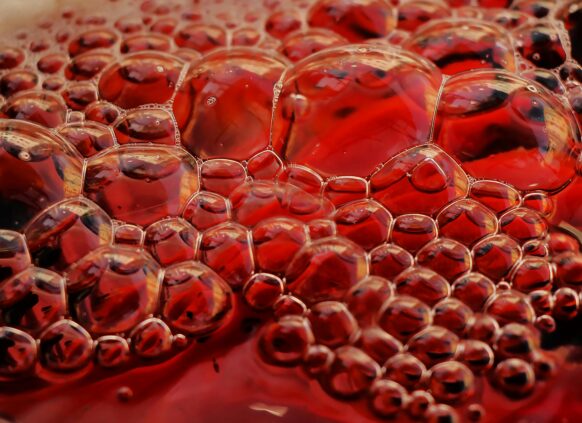
Blood cholesterol
Blood cholesterol is the cholesterol in your bloodstream. Cholesterol is a vital fatty substance that helps keep your cells healthy.
But when levels become too high, cholesterol can build up in your arteries and raise your risk of health problems.
Blood cholesterol is broken down into two main types:
- HDL cholesterol – the ‘good’ cholesterol, which helps remove cholesterol from your blood vessels. This protects against heart disease and stroke.
- Non-HDL cholesterol – the ‘bad’ cholesterol, which can block arteries when it builds up too much. This raises your risk of heart disease and stroke.
Triglycerides are a similar type of blood fat. Your body makes them from excess calories, refined carbohydrates, and alcohol. High triglyceride levels, especially alongside high blood cholesterol, can increase your risk of heart problems.
The role of food
Reducing fats is more important than cutting out dietary cholesterol.
So, when people talk about high cholesterol foods to avoid, they’re often referring to foods that raise your blood cholesterol, not just those containing dietary cholesterol.
Most people in the UK eat too much saturated fat. The UK government recommends that:
- Men should limit saturated fat to less than 30g per day
- Women should limit saturated fat to less than 20g per day
- Men and women should limit trans fat to less than 5g per day
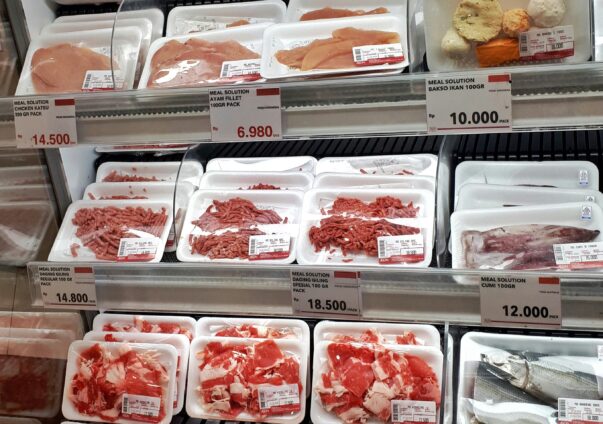
Foods to limit if you want to lower cholesterol
The most important foods to avoid if you’re trying to lower your cholesterol levels are:
1. Processed meats
Meats like bacon, sausages, and salami are high in saturated fat.
Two pork sausages can contain up to 10 g of saturated fat – that’s half the daily limit for women, and a third of the limit for men.
Instead of processed meat, try lean, minimally processed proteins, such as skinless chicken, eggs, tofu, beans, chickpeas, or fish.
Foods high in saturated and trans fats can affect how your liver processes cholesterol, which is a key cause of raised blood cholesterol.
2. Fried foods and deep-fried snacks
Fried foods and deep-fried snacks, like chips, crisps and doughnuts, contain high levels of saturated fat.
Deep-frying in vegetable oils or partially hydrogenated fats can add trans fats to foods, which can increase non-HDL cholesterol and raise your risk of heart issues.
A medium-sized serving of chips (approximately 100 g) contains 2–3 g of saturated fat, while a doughnut can have anywhere from 3–10 g.
Try baked or grilled options, like a jacket potato without oil, and swap fried snacks for unsalted nuts.
If you eat crisps, baked versions are a better choice as they are lower in calories and saturated fat, or you could try baking some wholemeal pitta bread for a healthy alternative.
Myth: “Cholesterol is only about fat.”
While saturated and trans fats are key contributors, refined carbohydrates and added sugars also play a role.
High-GI foods like doughnuts and fried chips can raise your risk of heart issues. They can also lead to weight gain, especially around the abdomen, which is linked to high cholesterol.

3. Baked goods
Cakes, pastries and biscuits often contain high amounts of saturated fat.
For example, a croissant may have 7 g, and a slice of cheesecake (80 g) can contain 8 g of saturated fat. These foods are also usually high in sugar, which can raise triglyceride levels and increase the risk of heart disease.
4. Red and fatty cuts of meat
Beef, pork and lamb, especially fatty cuts like ribs, pork chops and ribeye steak, are high in saturated fat. This can affect liver function and raise ‘bad’ cholesterol.
A 200 g ribeye steak can have around 15 g of saturated fat.
Try lean protein alternatives like fish, skinless chicken, tofu, beans, or turkey breast.

6. Full-fat dairy in large quantities
Butter, cream, and whole milk are high in saturated fat and calories.
For example, a cup of whole milk contains around 5 g of saturated fat, while skimmed milk has just 1 g.
Where possible, choose reduced-fat versions of cheese, yoghurt, and butter.
6. Fast food
Most fast food is ultra-processed and contains high levels of sugar, refined carbs, saturated fat, and salt – all of which can contribute to weight gain and raise cholesterol.
Try home-made alternatives using whole foods.
For example, instead of a takeaway pizza, try making one at home with low-fat cheese, vegetables, lean protein, and a thin base. This gives you the treat while improving the nutritional value.

7. Coconut oil and palm oil
Both coconut oil and palm oil are high in saturated fat.
Research shows palm oil raises non-HDL cholesterol more than unsaturated oils like olive oil or sunflower oil.
Extra-virgin olive oil has about 14% saturated fat, compared to 90% in coconut oil and 50% in palm oil.
8. Ultra-processed foods high in saturated fat and sugar
It’s also helpful to limit ultra-processed foods such as milk chocolate, ice cream, and sugary drinks like cola.
Think in terms of sensible swaps. It’s not about cutting things out completely, but about enjoying them less often.
For example, try a few squares of dark chocolate instead of milk chocolate.
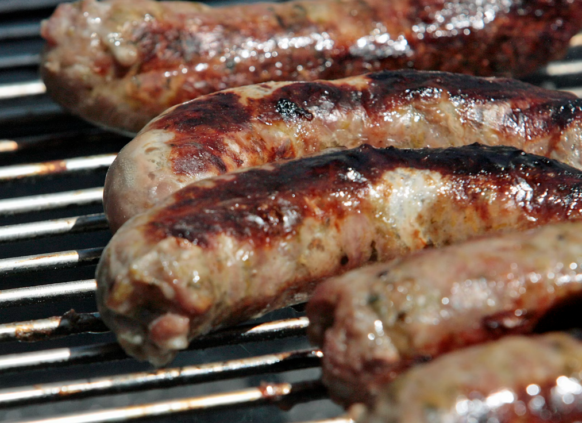
What about foods high in dietary cholesterol?
Some foods that contain dietary cholesterol are also high in saturated fat. These are best eaten in moderation, as saturated fat has a bigger effect on your blood cholesterol levels – especially if eaten in large amounts.
Some foods high in both dietary cholesterol and saturated fat include:
- Processed meat, like sausages
- Fatty cuts of red meat
- Full-fat dairy products (milk, yoghurt, and cheese)
Some foods contain dietary cholesterol but are low in saturated fat. For most people, these can be included in a balanced diet without having a big impact on cholesterol levels.
Examples include:
- Eggs
- Offal, like liver
- Shellfish
The exception is if you have familial hypercholesterolaemia or are a hyper-responder.
In those cases, it’s recommended to keep dietary cholesterol below 300 mg per day, and when possible, aim for no more than 200 mg per day.
Here are some examples of foods that contain dietary cholesterol, plus how much they typically contain per portion:
| Food | Dietary cholesterol (mg) per portion |
| Free range eggs | 180 – 250 |
| Pork liver (100 g) | 250 – 300 |
| Prawns (100 g, cooked) | 180 – 200 |
| Lobster (200 g, cooked) | 150 – 300 |
Understanding cholesterol and weight loss
A lot of the foods that raise cholesterol are also high in calories, which can contribute to weight gain.
Making small changes – like reducing these foods and choosing healthier alternatives – can support weight loss and help lower non-HDL (‘bad’) cholesterol.
Weight loss on its own can lower cholesterol. That’s because losing weight can improve how your liver processes cholesterol, helping reduce the amount in your blood.
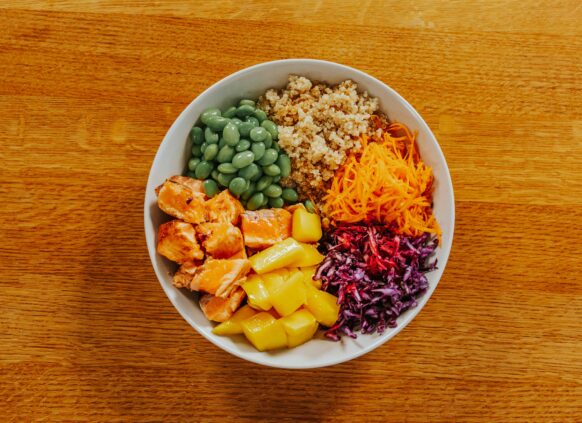
Try to:
- Swap high-calorie, high saturated fat foods for healthier alternatives – like switching fried sausages for grilled, skinless chicken sausages, or trading the mince in your bolognese for lentils
- Reduce added sugars and refined carbs to help lower triglycerides, support fat loss, and reduce the risk of heart problems – opt for the sugar-free version of your favourite soft drink, and try swapping white bread for healthier wholemeal.
These changes don’t mean giving up your favourite meals – just making small, lasting swaps that support your health.
If you’re eligible, you can get personalised support from Oviva to help you make sustainable lifestyle and dietary changes that support both weight and cholesterol goals.
Which everyday foods affect cholesterol?
What to focus on instead
Here are some simple, everyday ways to support lower cholesterol levels:
- Eat more soluble fibre – found in oats, beans, and vegetables
- Choose unsaturated fats – like olive oil or rapeseed oil instead of saturated fats
- Include lean proteins – such as fish, skinless chicken, beans, and lentils
- Go for whole grains – like wholewheat pasta and brown bread
- Add plant sterols – found in some fortified spreads
- Limit ultra-processed foods and trans fats – like baked goods, ice cream, and burgers
Read more: Does fasting lower cholesterol?
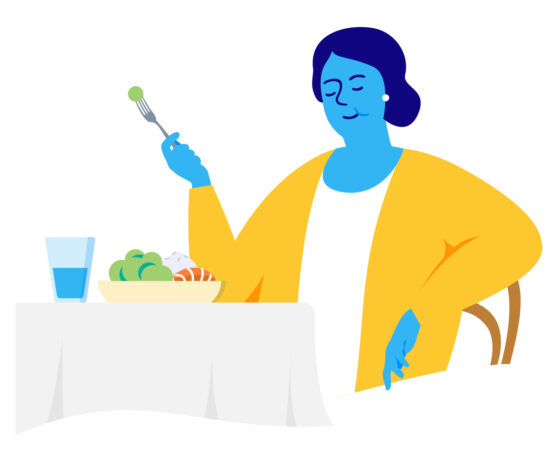
Lose weight and manage your health with Oviva
If you have a BMI over 35 and high cholesterol, you could get free, NHS-funded support through Oviva’s personalised weight management programme.
It’s designed by doctors and dietitians, and it fits around your life – no strict diets, no calorie counting, and no in-person appointments.
What’s included:
- A tailored plan to help lower cholesterol and support sustainable weight loss
- Expert guidance from dietitians, psychologists, and doctors
- Optional access to NHS-covered weight loss medication, delivered to your door
- The Oviva app to track meals, progress, and habits on your terms
Our users lose an average 13.6 kg in 12 months – just one of the reasons why 97% of users would recommend Oviva.
